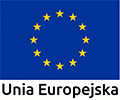On October 19, 2022, the employees of the Treblinka Museum took part in the official premiere of the film directed by Waldemar Kowalski – Head of the Film Documentation Department of the Museum of the Second World War in Gdańsk, entitled “Bez prawa do życia” (Without the right to life). The film was shown on the 80th anniversary of the liquidation of the ghetto in Tarłów, whose inhabitants were transported to the German Nazi death camp in Treblinka.
Before the premiere, the Treblinka Museum’s delegation was invited to a meeting with Dr. hab. Grzegorz Berendt, the Director of the Museum of the Second World War, Dr. Marek Szymaniak, Deputy Director, Waldemar Kowalski and representatives of other departments. The meeting was followed by a tour of the exhibition at the museum.
The film “Bez prawa do życia” tells the tragic history of the Jewish community of Tarłów and the surrounding towns. Jewish women, children and men from Tarnów were transported to Treblinka, where they were murdered in the gas chambers, like other transports to Treblinka. The story in the documentary is told by witnesses of those events and historians. The film also includes documents and photos. The whole is complemented by poignant music, that provokes reflection. The producers of the film are the Museum of the Second World War and the Ministry of Culture and National Heritage.
The ghetto in Tarłów was established on March 8, 1940. The occupiers ordered the Jews from Tarłów and the surrounding towns to move to a part of the town inhabited by large number of Jews, where there was already a synagogue and a mikveh – a ritual bath. On May 12, 1941, the ghetto was closed. The Jewish population isolated there was starving. Bread collecting campaigns were organized for the poorest families. The local residents tried to deliver food to the ghetto in various ways. Poor sanitary conditions led to the outbreak of typhus. Attempts to leave the closed district ended in death. The Jews were used as free labour, they worked on farms and in the phosphate mine next to the village of Chałupki. High heaps of excavated sand have survived to this day.
The results of the Wannsee conference (January 20, 1942) concerning the so-called “final solution of the Jewish question” in the German-occupied territories of Poland, under the code name “Operation Reinhardt”, also included Tarłów.
On October 8, 1942, the concentration of Jews from nearby towns in the Tarłów ghetto was completed. The next day, the SS – Wachmannschaften – the German military police, and the Polish and Jewish police, that was forced to cooperate, started the liquidation. In the morning, the Jews were supposed to come to the designated square at the sound of the trumpet. Under the threat of death, their belongings were taken, often in a brutal way. Many people were wounded or even murdered before departure. The victims were chased out to the Jasice railway station, from where they were transported in freight wagons, to the Treblinka II Extermination Camp. About 7,000 Jews died in the gas chambers. 1,500 of them came from Tarłów, the rest of the victims were people displaced from other towns.
We would like to congratulate Dr. hab. Grzegorz Berendt, Mr. Waldemar Kowalski and all employees of the Museum of the Second World War involved in the creation of the documentary.
We would also like to thank for inviting Ilona Sadowska, a guide at the Treblinka Museum, to participate in the film, and for the warm welcome of our delegation.
Source: the film “Bez prawa do życia”.





